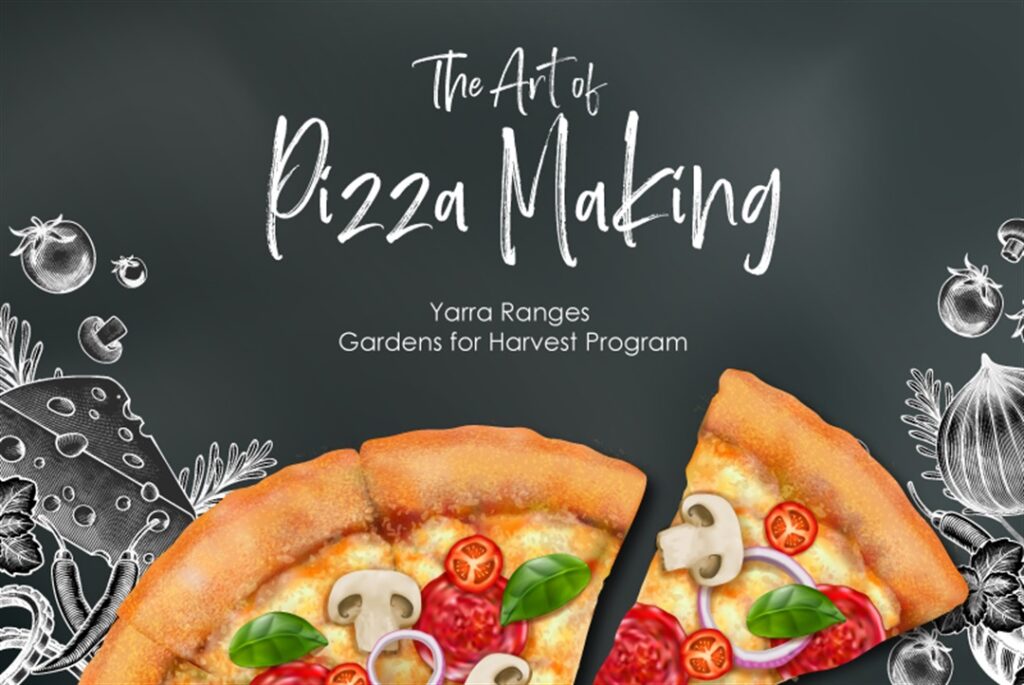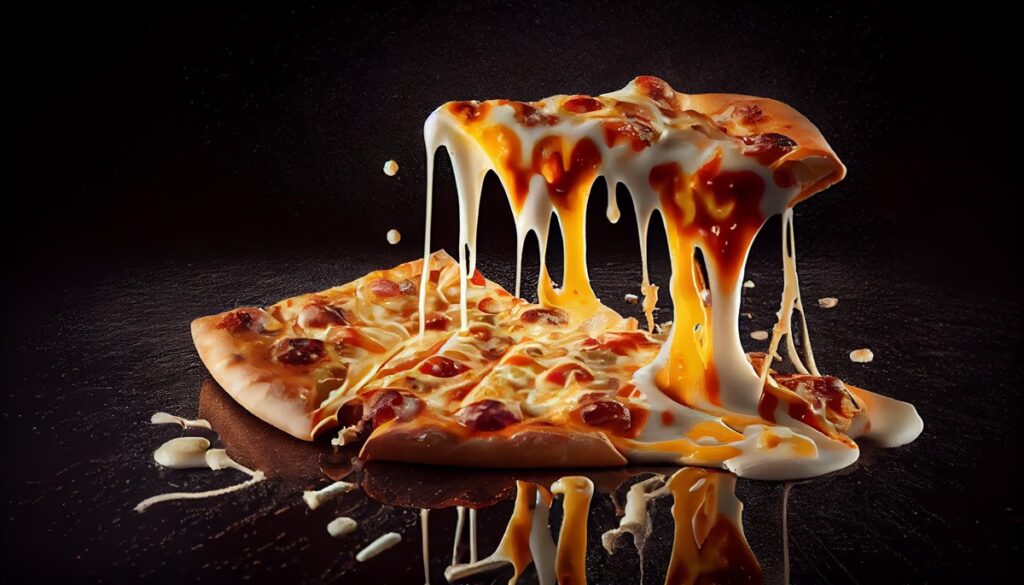Pizza is more than just a dish; it’s a cultural phenomenon, a comfort food, and a versatile canvas for culinary creativity. From its humble origins in Naples, Italy, to its current status as a global favorite, pizza has evolved and adapted, reflecting the tastes and traditions of countless cultures. This article delves into the history, varieties, and cultural significance of pizza, celebrating its enduring popularity and endless possibilities.
The Historical Roots of Pizza
Ancient Beginnings
The concept of pizza dates back to ancient civilizations where flatbreads were topped with various ingredients. The ancient Greeks, Egyptians, and Romans all had their versions of flatbreads, often topped with olive oil and local spices. However, it was in Naples, Italy, during the 18th and 19th centuries that pizza as we know it began to take shape.
The Birth of Modern Pizza
Naples was a thriving port city, attracting visitors from around the world. Street vendors and bakers started selling flatbreads topped with tomatoes, cheese, oil, anchovies, and garlic. Initially considered food for the poor, pizza soon gained popularity across different social strata. The Margherita pizza, named after Queen Margherita of Savoy, is a notable creation from this period. Its ingredients—tomato, mozzarella, and basil—represent the colors of the Italian flag.
The Spread of Pizza Worldwide
Pizza in America
Italian immigrants brought pizza to the United States in the late 19th and early 20th centuries. The first pizzeria in America, Lombardi’s, opened in New York City in 1905. Pizza quickly became a beloved dish in Italian-American communities and beyond. Post-World War II, its popularity skyrocketed, leading to regional variations like New York-style pizza, Chicago deep-dish, and California gourmet pizza.
Global Adaptations
As pizza spread across the globe, it was adapted to local tastes and ingredients. In Japan, you’ll find pizzas topped with squid and mayo; in India, paneer and tandoori chicken are common toppings. The adaptability of pizza has allowed it to flourish in diverse culinary landscapes, making it a truly global dish.
Varieties of Pizza
Neapolitan Pizza
Authentic Neapolitan pizza is characterized by its simple ingredients and cooking method. Made with just a few high-quality ingredients—San Marzano tomatoes, mozzarella di bufala, fresh basil, salt, and olive oil—it’s cooked in a wood-fired oven at very high temperatures for a short time. This results in a soft, tender crust with a slightly charred, smoky flavor.
New York-Style Pizza
New York-style pizza is famous for its large, thin, and foldable slices. The dough is hand-tossed and typically has a higher gluten content, giving it a chewy texture. Toppings are plentiful, with classic options including pepperoni, sausage, and mushrooms. It’s often sold by the slice, making it a quick and convenient meal.
Chicago Deep-Dish Pizza
Chicago deep-dish pizza is more akin to a pie than a traditional pizza. It features a thick, buttery crust that’s pressed into a deep pan, creating a sturdy base for layers of cheese, toppings, and chunky tomato sauce. Baking times are longer, resulting in a hearty, substantial dish that’s a meal in itself.
California Pizza
California pizza is known for its innovative toppings and combinations, often reflecting the state’s health-conscious and gourmet food culture. Common ingredients include fresh vegetables, artisanal cheeses, and unique proteins like smoked salmon or duck. The crust is typically thin and crisp, serving as a delicate base for the creative toppings.
Detroit-Style Pizza
Originating in Detroit, Michigan, this pizza is known for its rectangular shape and thick, crispy crust. It’s baked in a heavy steel pan, which helps create a caramelized, crunchy edge. Cheese is spread all the way to the edges, and the sauce is typically ladled on top of the cheese and toppings.
The Art of Pizza Making

Dough
The foundation of any pizza is its dough. A well-made dough can make or break the pizza experience. Traditional pizza dough is made from just four ingredients: flour, water, salt, and yeast. The type of flour and the fermentation process can significantly affect the texture and flavor of the crust. High-gluten flours yield a chewier crust, while longer fermentation times develop more complex flavors.
Sauce
Pizza sauce varies widely, from the simple crushed tomatoes used in Neapolitan pizza to rich, seasoned sauces found in American styles. The key to a great sauce is balancing acidity and sweetness, allowing the natural flavors of the tomatoes to shine. Fresh herbs and spices add depth and complexity.
Cheese
Mozzarella is the quintessential pizza cheese, known for its meltability and mild flavor. However, other cheeses like provolone, Parmesan, ricotta, and even blue cheese can be used to add different textures and tastes. The choice of cheese can dramatically change the character of the pizza.
Toppings
The sky’s the limit when it comes to pizza toppings. Traditional options include pepperoni, sausage, mushrooms, onions, and olives. However, modern pizzas might feature anything from prosciutto and arugula to pineapple and jalapeños. The key is to balance flavors and textures, ensuring that each bite is harmonious.
Pizza Culture
Pizza in Pop Culture
Pizza has cemented its place in popular culture, appearing in movies, TV shows, and even music. From the Teenage Mutant Ninja Turtles’ insatiable appetite for pizza to iconic scenes in films like “Home Alone” and “Saturday Night Fever,” pizza is often portrayed as a beloved comfort food. It symbolizes fun, relaxation, and communal enjoyment.
Pizza Festivals and Competitions
Around the world, pizza festivals and competitions celebrate the art of pizza making. Events like the World Pizza Championship in Italy and the International Pizza Expo in Las Vegas attract top pizzaiolos who showcase their skills and creativity. These gatherings highlight the craftsmanship and passion behind making great pizza.
The Economics of Pizza
Pizza is big business. The global pizza market is worth billions, with major chains like Domino’s, Pizza Hut, and Papa John’s dominating the industry. However, there’s also a thriving market for artisanal and independent pizzerias, which offer unique and high-quality alternatives to mass-produced pizzas. The industry’s growth is driven by pizza’s universal appeal and adaptability.
Health and Pizza
Nutritional Considerations
While pizza is often seen as indulgent comfort food, it can be part of a balanced diet. The nutritional content of pizza varies based on ingredients and portion size. Whole grain crusts, vegetable toppings, and moderate cheese amounts can make pizza a healthier choice. Additionally, homemade pizzas allow for control over ingredients, reducing the reliance on processed components.
Gluten-Free and Vegan Options
The rise of dietary preferences and restrictions has led to an increase in gluten-free and vegan pizza options. Gluten-free crusts made from alternative flours like rice, almond, or cauliflower provide options for those with gluten sensitivities. Vegan cheeses and plant-based toppings make it possible for everyone to enjoy pizza, regardless of dietary restrictions.
The Future of Pizza
Technological Innovations
As technology continues to advance, the pizza industry is embracing innovations that enhance both production and consumer experience. Automation and robotics are making waves in pizza making, with machines capable of preparing dough, adding toppings, and baking pizzas with remarkable speed and consistency. This technology is especially beneficial for large chains, helping them meet high demand while maintaining quality.
On the consumer side, advancements in online ordering and delivery systems have revolutionized the way people enjoy pizza. Mobile apps and websites allow for seamless customization and ordering, while GPS tracking provides real-time updates on delivery status. Some companies are even experimenting with drone and autonomous vehicle deliveries, promising faster and more efficient service.
Sustainability and Ethical Considerations
With growing awareness of environmental and ethical issues, the pizza industry is also moving towards more sustainable practices. This includes sourcing ingredients from local and organic farms, reducing food waste, and using eco-friendly packaging. Pizzerias are increasingly offering plant-based and sustainable protein alternatives, such as vegan meats and dairy-free cheeses, to cater to environmentally conscious consumers.
Energy-efficient ovens and renewable energy sources are becoming more common in pizzerias aiming to reduce their carbon footprint. By prioritizing sustainability, the pizza industry can play a part in addressing global environmental challenges while appealing to the growing number of eco-conscious diners.
Exploring Pizza Beyond the Plate

Pizza-Themed Experiences
Pizza’s cultural impact extends beyond the plate into various aspects of entertainment and lifestyle. Pizza museums, such as the Pizza Museum in Philadelphia, celebrate the history and cultural significance of this beloved dish with exhibits featuring vintage pizza memorabilia, interactive displays, and even cooking demonstrations.
Escape rooms, video games, and board games centered around pizza add to the fun, engaging enthusiasts in unique and immersive experiences. Pizza-themed merchandise, from clothing and accessories to home decor, allows fans to express their love for pizza in everyday life.
Pizza and Social Media
In the age of social media, pizza has found a new platform for expression and creativity. Instagram, TikTok, and YouTube are filled with mesmerizing pizza-making videos, recipes, and reviews that garner millions of views. Influencers and chefs share their pizza creations, tips, and hacks, inspiring a global audience to try their hand at making and enjoying pizza.
Pizza challenges and trends, such as the “pizza cone” or “pizza cake,” capture the imagination of social media users, driving engagement and innovation in the pizza world. This digital presence not only keeps pizza at the forefront of popular culture but also connects enthusiasts across the globe.
The Personal Touch: Making Pizza at Home
The Joy of Homemade Pizza
Making pizza at home offers a unique and satisfying experience. It allows for complete control over ingredients, customization, and the opportunity to experiment with different flavors and techniques. The process of kneading dough, spreading sauce, and layering toppings can be a fun and educational activity for families, friends, and individuals alike.
Tips for Perfecting Homemade Pizza
- Start with Quality Ingredients: The foundation of a great pizza is high-quality ingredients. Use fresh, ripe tomatoes for the sauce, the best mozzarella you can find, and fresh herbs and toppings.
- Master the Dough: The dough is crucial. Allow it to ferment for at least 24 hours to develop flavor. A high-gluten flour can provide the desired chewiness, while a longer kneading time helps develop the gluten structure.
- Invest in the Right Tools: A pizza stone or steel can significantly improve your home-baked pizza by providing a hot, even cooking surface. A pizza peel helps transfer the pizza to and from the oven without losing its shape.
- Perfect the Baking Process: Preheat your oven to its highest setting and allow the pizza stone or steel to heat up thoroughly. This mimics the high temperatures of a professional pizza oven, ensuring a crispy crust.
- Experiment with Toppings: Don’t be afraid to get creative with your toppings. Try seasonal vegetables, unique cheeses, or international flavors to create a pizza that’s truly your own.
Pizza and Community
Pizza as a Social Connector
Pizza has a unique ability to bring people together. Whether it’s sharing a pie with friends, celebrating a birthday, or enjoying a family meal, pizza often serves as the centerpiece of communal gatherings. Its versatility and universal appeal make it an easy choice for social events, fostering connections and creating lasting memories.
Supporting Local Pizzerias
While major chains dominate the market, local pizzerias play a crucial role in their communities. They offer unique, often artisanal pizzas that reflect local tastes and traditions. Supporting these small businesses helps maintain the diversity and richness of pizza culture and contributes to the local economy.
Conclusion
Pizza’s journey from a humble street food in Naples to a global culinary icon is a testament to its universal appeal and adaptability. Its rich history, diverse varieties, and cultural significance make it much more than just a meal. Whether you’re savoring a classic Margherita, indulging in a deep-dish, or exploring innovative toppings, pizza remains a beloved favorite that continues to evolve and inspire. The pizza edition celebrates not just a dish, but a shared culinary heritage that brings people together in joy and satisfaction.


